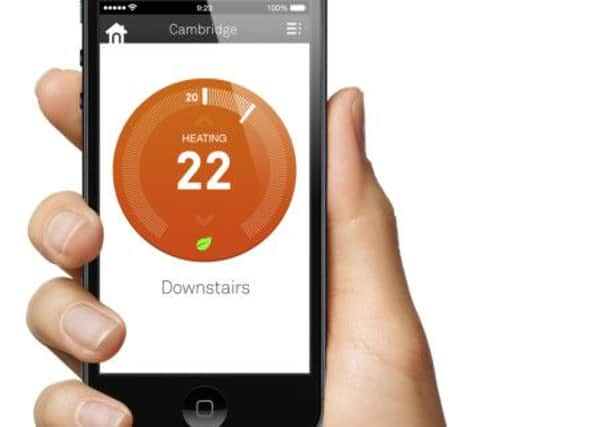Smart thermostats for your home: Will they save you money?


Technology now makes it possible to monitor your use of gas and electricity more efficiently in your home - but because this invention is the mother of necessity, behind it sits a rather aggressive business model. That means you may have to spend a lot to save a little.
Nest and Hive, for instance, are so-called smart thermostat systems which instead of just turning themselves on and off twice a day, attempt to learn something of your living habits and programme your boiler to suit.
Advertisement
Hide AdAdvertisement
Hide AdBecause they interface with your central heating and replace your existing thermostat, you need a plumber to install them, at a cost of up to £250. Then you need to connect them to your wi-fi network so you can control them from devices around the house.
British Gas is behind Hive, and Nest is owned by Google - which operates it in the UK in partnership with nPower. The installation cost depends on which energy tariff you choose from these suppliers, and available deals are changing all the time.
Once up and running, you can control your heating from apps installed on your phones, tablets and computers, as well as from a module on the wall. Telling the system that you’re late home on Friday because you’re going to the pub suddenly becomes routine - but bear in mind that your boiler itself is not made more efficient by this information; just your use of it. At least, the systems display details of your real-time usage so you can see your money being sucked out of your bank account.
While Hive and Nest are similar in principle, their ethos differs. Nest tries to be “self-learning”, with a motion sensor that can detect when there’s no-one home; while Hive relies on you programming it in advance, rather like an old-fashioned video recorder - and we all remember how tedious that was.
Advertisement
Hide AdAdvertisement
Hide AdYou don’t need to go through an energy supplier to acquire this technology: manufacturers like Tado are now selling direct to consumers boxes which replace existing thermostats and which require only electrical, not plumbed installation. Tado, which bills its service as “intelligent climate control”, charges £250 or a monthly rental of £7 for its connection kit and claims 95 per cent of its clients install it themselves. Insteon and Evohome are two more direct-sell options but they’re targeted more at professional installers than end users.
Obviously, more efficiency brings energy savings - but the question of whether the savings will ever be sufficient to recover your outlay is deeply debatable. On the other hand, an investment in one of these devices when you’re next routinely upgrading your boiler and thermostat makes a great deal of sense. For your sake, though, given the cost of boilers, I hope that’s a long way off.